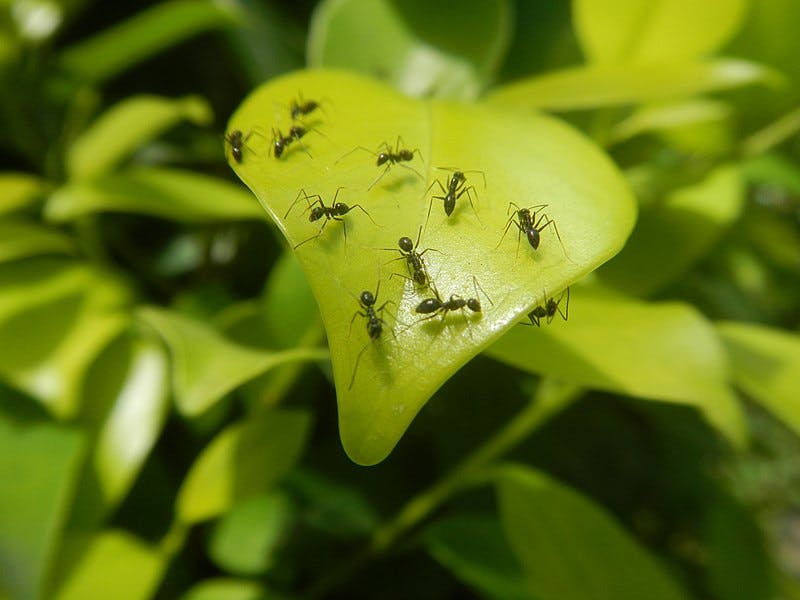Secrets of Earth’s Second-Most Successful Species
The results of Catherine Chalmers’ 10 years of ant work are on display at the Drawing Center at New York, through January 15.

Actually, the ants go marching quadrillions by quadrillions, according to the latest ant census. And they don’t just march. They carve trails. They make food. They build homes 12 feet deep, antiseptic as an operating room. And some nights they fight so ferociously you can see seven or eight million dismembered and decapitated ants after a battle — if you know what to look for.
Which Catherine Chalmers does.
Ms. Chalmers is an artist who works with living things. For a while it was roaches. (Gotta start somewhere.) But she’s also raised, drawn and photographed praying mantises, caterpillars and mice. Then, on a trip to Costa Rica, she saw the amazing trails leafcutter ants created on the floor of the forest and thought: I should do something with this.
Each ant was carrying a scrap of the flower or leaf they’d just cut, and the colors were incredible: fuchsia, chartreuse, sunshine yellow, and forest green. “It looked like a ticker tape parade,” Ms. Chalmers recalled. Just… smaller.
Now the results of Ms. Chalmers’ 10 years of ant work are on display at the Drawing Center at New York, through January 15. The exhibit is both beautiful and intense. Hand-drawn ants cover the walls. Some approach the delicate and precise maps of their colonies.
The video Ms. Chalmers made of the “ticker tape parade” is beyond gorgeous — closeups of ants walking to and fro, bringing home the bright gleanings they will store in their colony until they turn to fungus. When it does, that’s what they’ll eat. It’s the only thing they eat.
So, they are creatures who harvest raw ingredients, store them and turn them into something edible. That makes ants the “first farmers,” says Ms. Chalmers. They beat us by millions of years.
In part, that’s because they’re also amazing communicators. “They share user-generated data,” Ms. Chalmers says. When they hear of danger afoot (perhaps actually a foot?), they spread the word: Hide. And when they learn of a new source of yumminess, they rally the troops to go get it. With her camera at ground level, Ms. Chalmers filmed it all, the way an artist might film a day at the factory.
Why? Because other than humans, “ants are the most successful social species on earth,” says Ms. Chalmers. “They are dominant in nearly every habitat they’re in. Consequently, what they decide to take and not take determines the composition of lands, and the effect on all the other animals.”
They rule — a fact Ms. Chalmers highlighted by cutting some leaves into the inch-high letters “WE RULE,” which the ants picked up and triumphantly carried home as Ms. Chalmers filmed.
Those homes — colonies — can survive for an entire decade. And as Ms. Chalmers discovered, different colonies actually have different personalities.
For instance, she said: One very aggressive colony would go out of its way to attack others. Oddly, it was also the only one terrified of her camera lights. Its ants would run and hide. But then? Back to marauding.
One day, Ms. Chalmers noticed the local ants looking agitated — which is not something most of us would necessarily put our finger on. But Ms. Chalmers? “I knew something was brewing.”
The next morning, she woke to find literally “millions of slaughtered ants just everywhere.” Worse: They’d torn off each other’s limbs.
The aggressive colony had attacked and won. And yet, when Ms. Chalmers placed a large branch of their favorite leaves conveniently in their path, “they walked right by it and wouldn’t even take it.” This brutal colony was also the least curious and adaptable.
Chalmers isn’t doing an Aesop here. She’s not sure what this proves… except that the living world is a complex, beautiful and sometimes senseless place for ants.
And for the rest of us.
Creators.com

